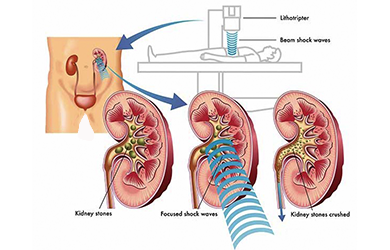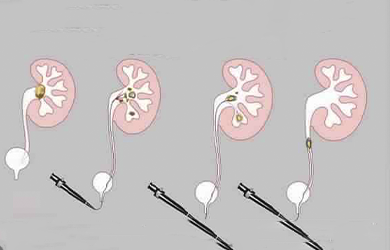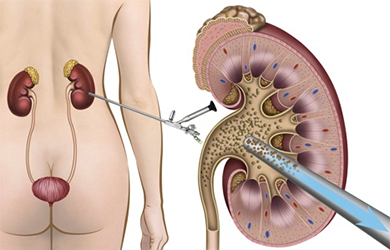
Kidney Stones
How common are kidney stones?
10-20% of the general population is found to have kidney stones at least once in their lifetime.
How do you know if you have kidney stones?
You will usually be unaware until the kidney stones detach themselves from your kidney walls and start moving into your ureters, bladder, and urethra as you pee.
Kidney stones variate in shapes and sizes. They can be smooth, jagged, or sharp and can be anywhere from 2mm in diameter to the size of a golf ball! The record for the largest kidney stone to date is the size of a 17cm coconut.
Generally, they can either be asymptomatic or symptomatic. If asymptomatic, you might only be aware of their presence after an MRI or CT Scan targeting your kidneys.
If symptomatic, the symptoms could be:
- Blood in your urine (hematuria) – pink, red, or brown urine
- Cloudy or foul-smelling urine
- A persistent need to urinate but in small amounts
- Pain when you pee
- Nausea and vomiting
- Fever and chills, if there is an infection
Why do kidney stones cause you so much pain?
Your ureters have a relatively narrow diameter of 2-3mm and a long passageway of approximately 10-12 inches.
When these kidney stones force themselves down your ureters, they cause friction and could tear and rip your ureters. You may feel the pressure that ranges from a mild and dull pain as you pee or tremendous pain if your kidney stones are above 5mm in diameter and have a jagged or sharp surface area as they squeeze themselves down your ureter – rubbing against your ureteric plexus (the nerves in your ureter).
Kidney stone patients have described the pain as excruciating! So, the earlier you treat the kidney stones before they grow larger, the less pain and damage they could cause to your kidneys and urinary system.
How do you get rid of kidney stones?
Depending on the size and hardness of your kidney stones as well as your body type, your urologist might suggest non-surgical or minimally invasive surgical procedures to help remove your kidney stones.
-
- ESWL (Extracorporeal Shockwave Lithotripsy): Shockwaves are focused on the stone to break it. You will need to pass out the stone by yourself.
- RIRS (Retro Intrarenal Surgery): A fine scope is inserted through the natural opening of your urethra and goes up into the urinary tract.
- PCNL (Percutaneous Nephrolithotomy): A tract is created – from your skin to the affected kidney at the loin region – and a scope is used to identify the stone and break it.
What are some of the non-surgical and surgical treatments to get rid of kidney stones?
There are 3 main treatments urologists may use to treat your kidney stones: ESWL, Ureteroscopy, and PCNL.
Extracorporeal Shockwave Lithotripsy (ESWL)

Extracorporeal Shockwave Lithotripsy (ESWL)
Retrograde Intrarenal Surgery (RIRS)

Retrograde Intrarenal Surgery (RIRS)
Percutaneous Nephrolithotomy (PCNL)

Percutaneous Nephrolithotomy (PCNL)
Can kidney stones worsen and cause you more harm other than intermittent physical pain or discomfort?
If left untreated, kidney stones might dislodge to your ureters and cause blockage, which may then lead to increased pressure in your kidneys, causing more damage to them.
How do you prevent yourself from getting kidney stones?
Kidney stones or nephrolithiasis are small hard mineral deposits formed in the kidneys through a process called crystallization.
There are more than 3000 different compounds in the urine – mainly made up of salt and minerals. 80% of these crystals or kidney stones are made up of calcium and oxalates. The rest are either made up of calcium, uric acid, and phosphates, or caused by bacterial infections, genetic disorders, or some medications.
The best prevention is WATER. You need to pee at least 2.5L of urine per day to prevent the stone from forming again and help flush out your system properly. If you work in a place where you sweat a lot, then you need to drink even more water to achieve a urine output of 2.5L per day. If not, most of the fluid that you drink will pass out through sweat instead of urine. Other suggestions are to reduce the dietary consumption of purine (alcoholic beverages, anchovies, mussels, bacon, and more) or oxalate (beans, berries, chocolates, coffee, and more) as they facilitate the formation of stones.
